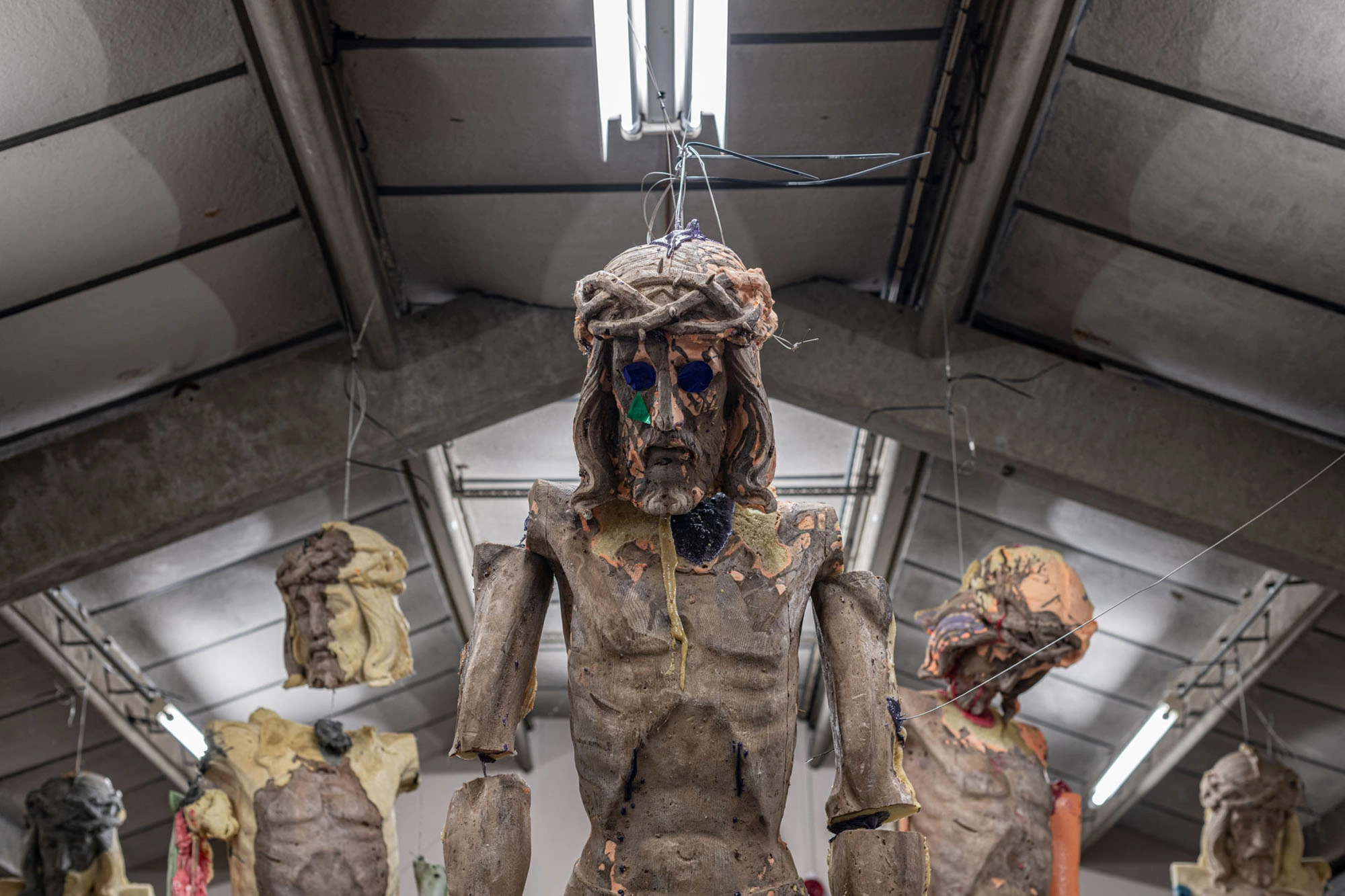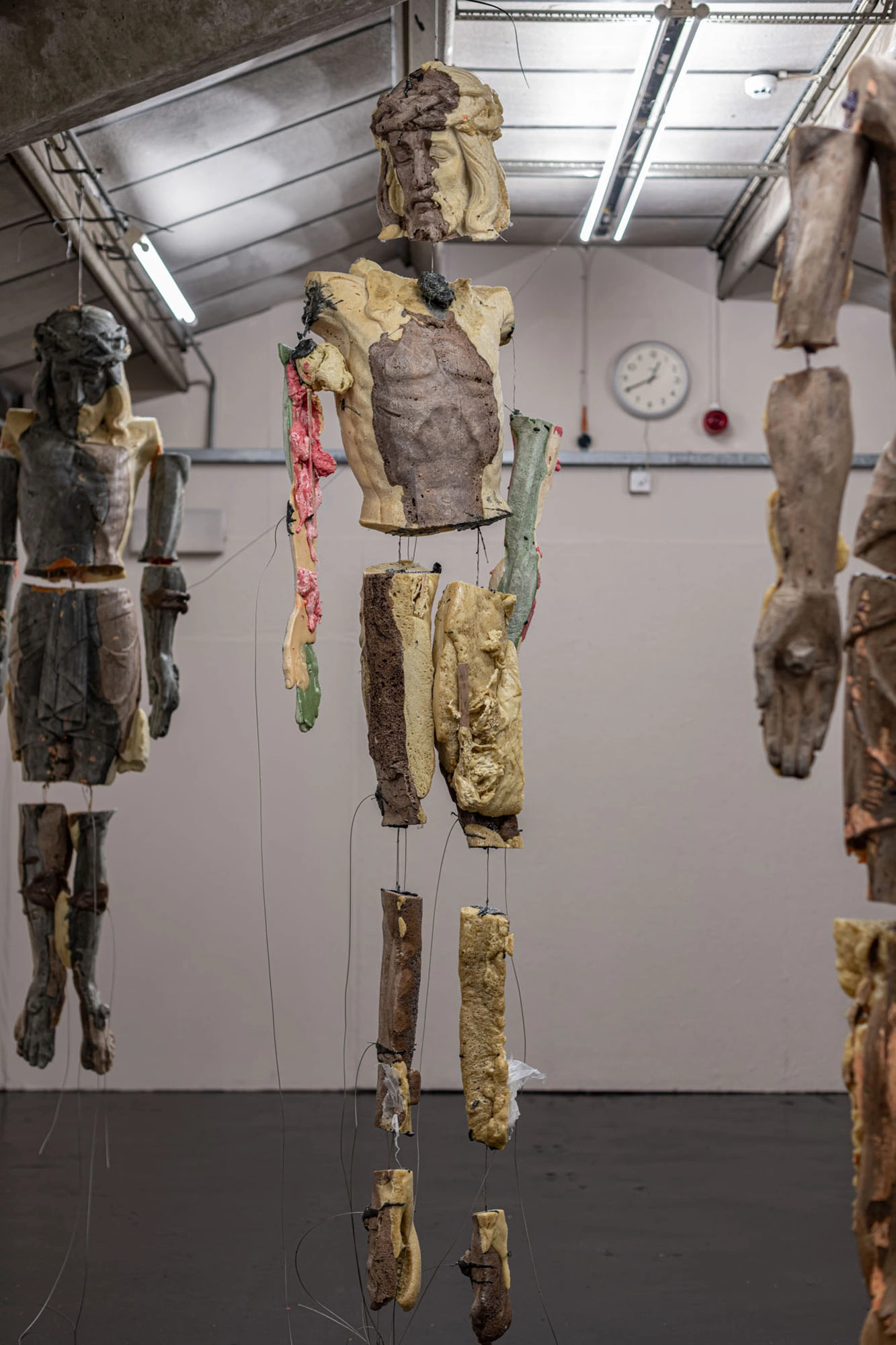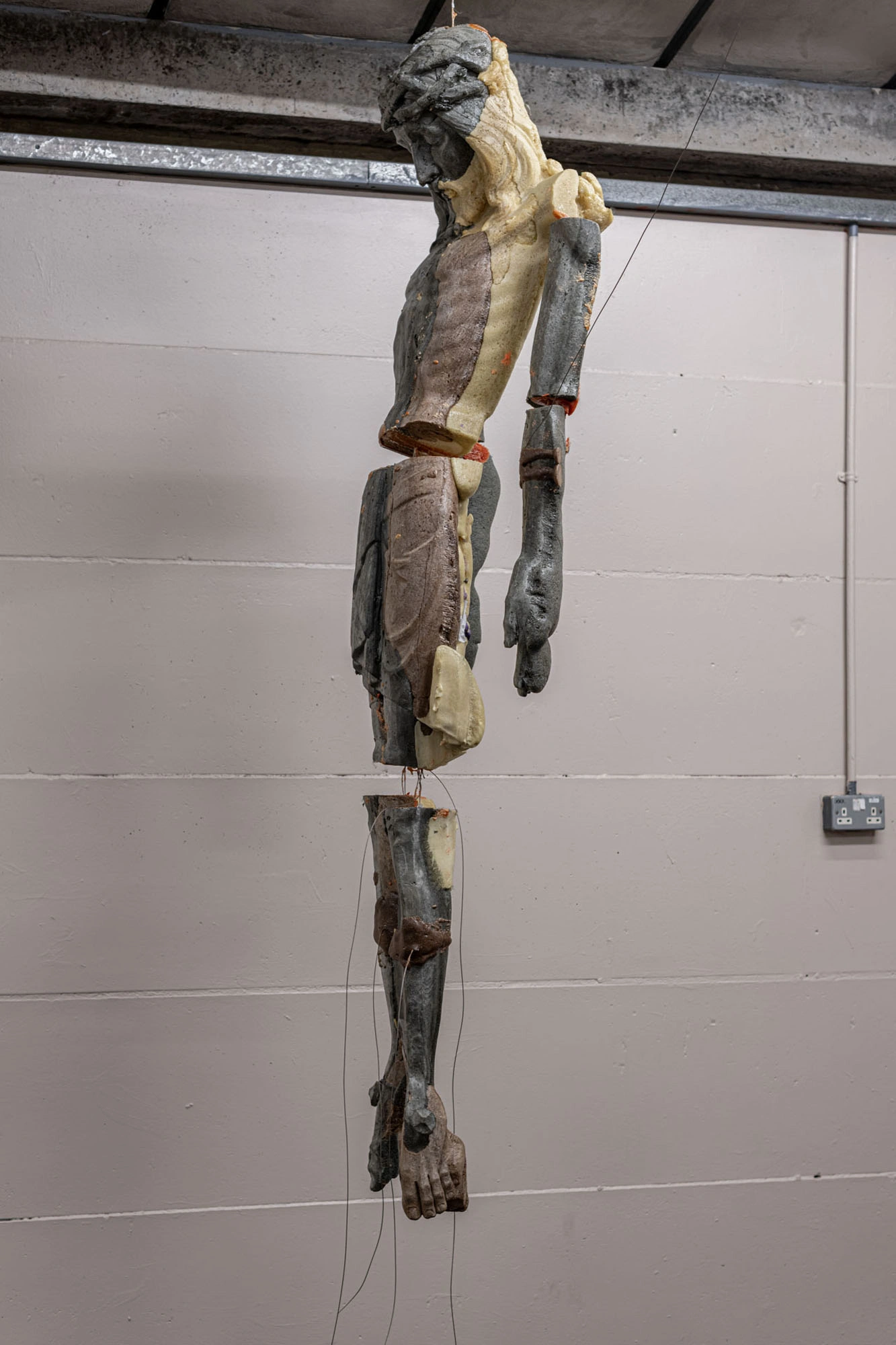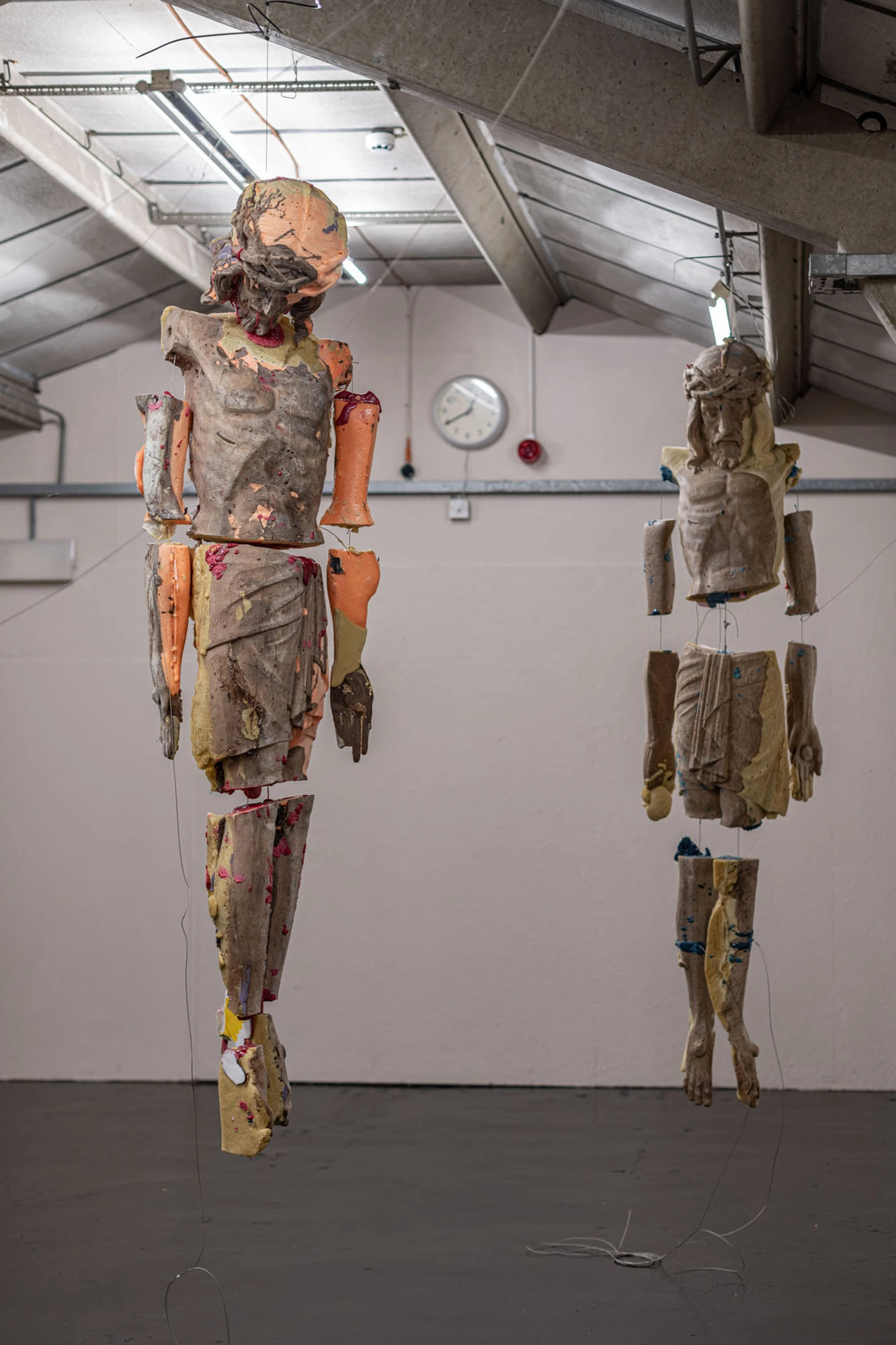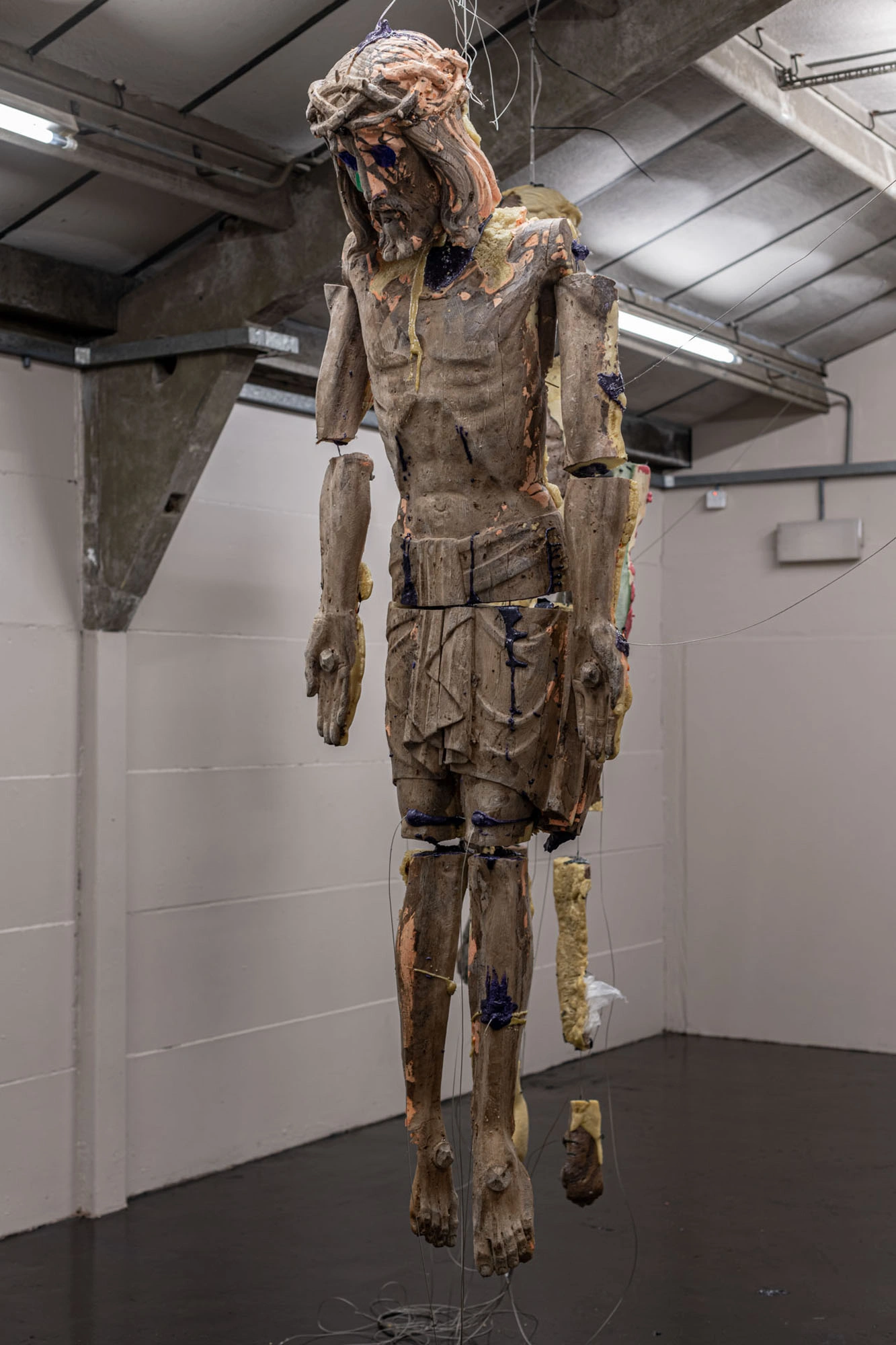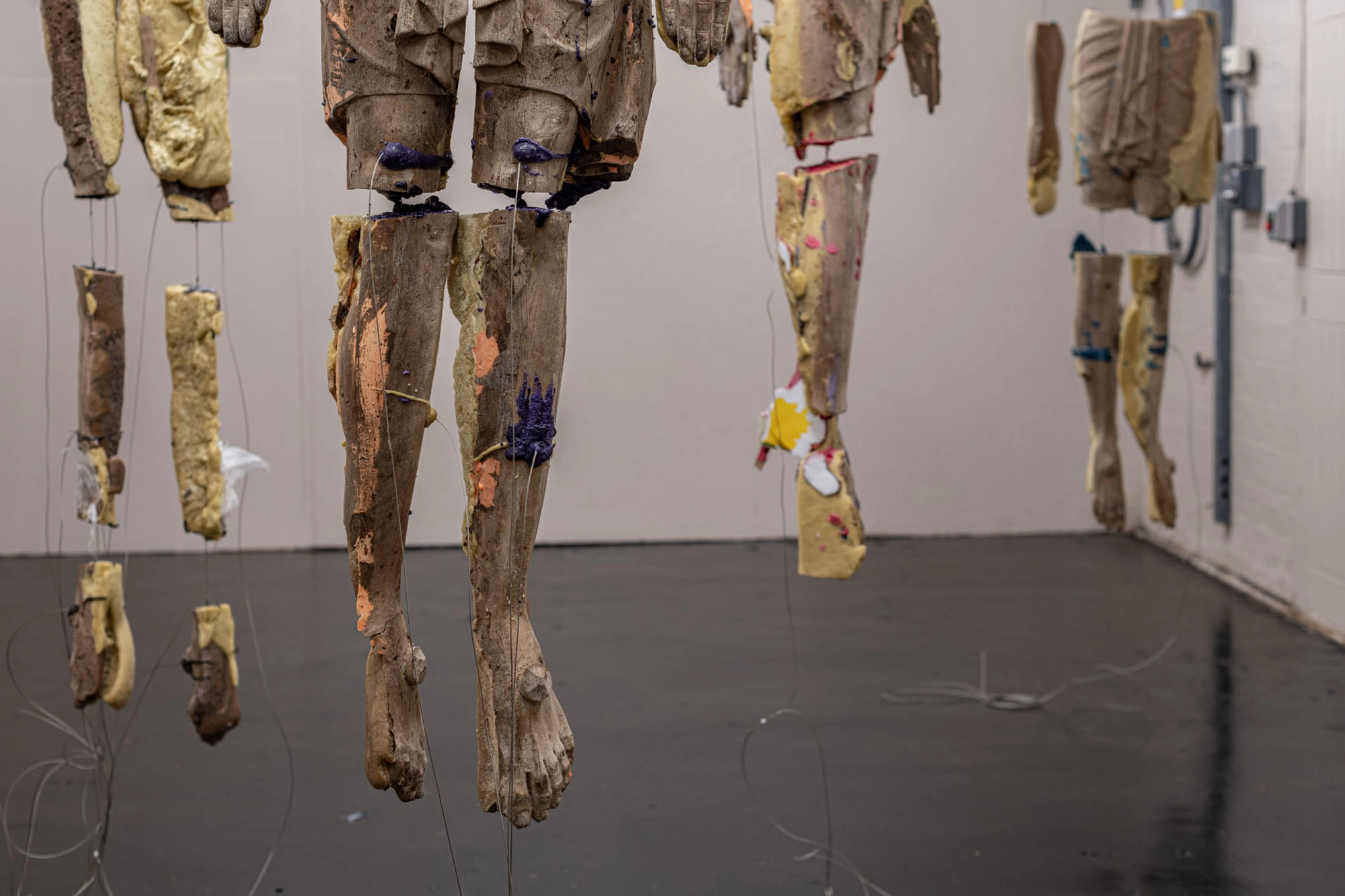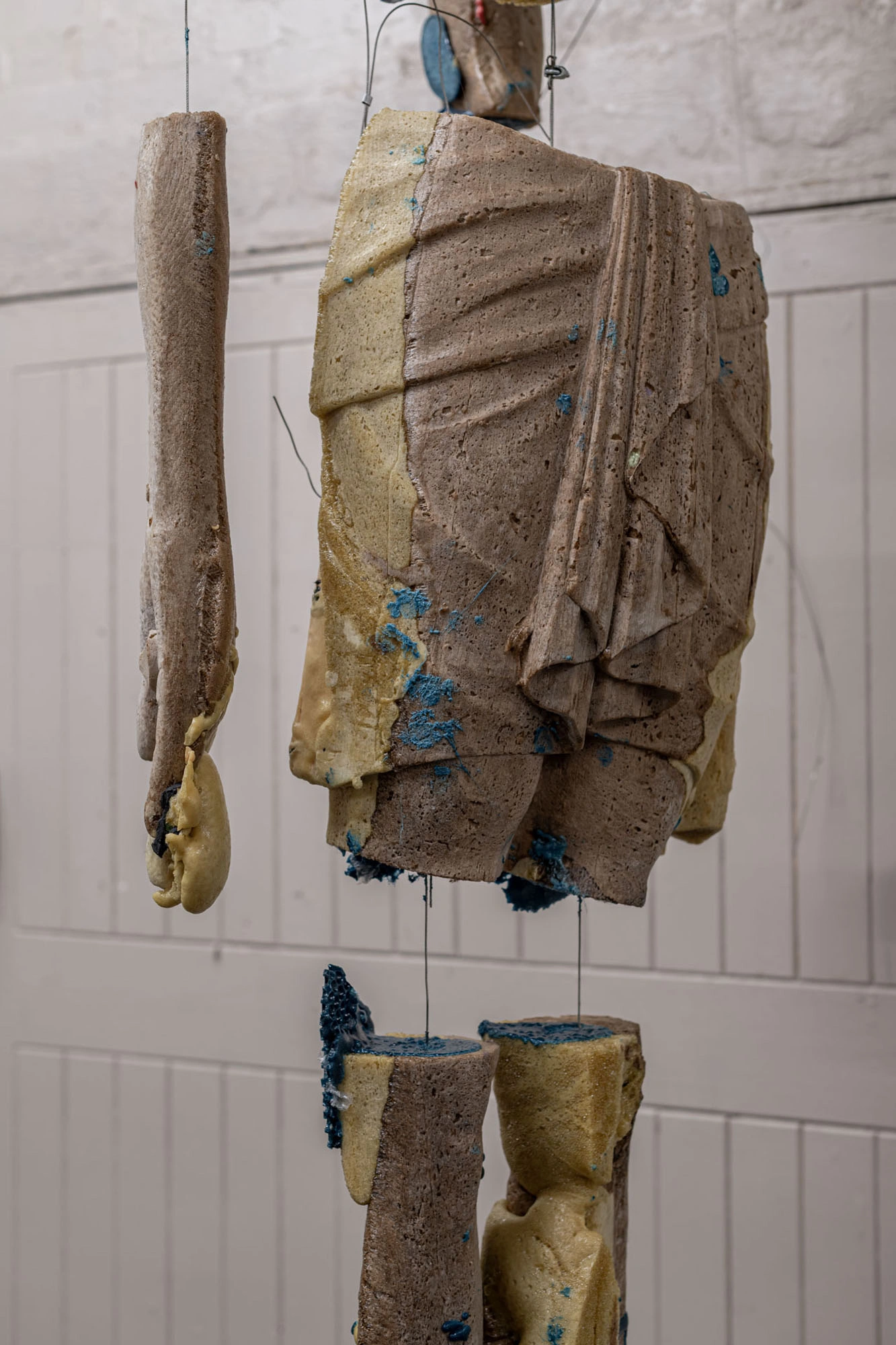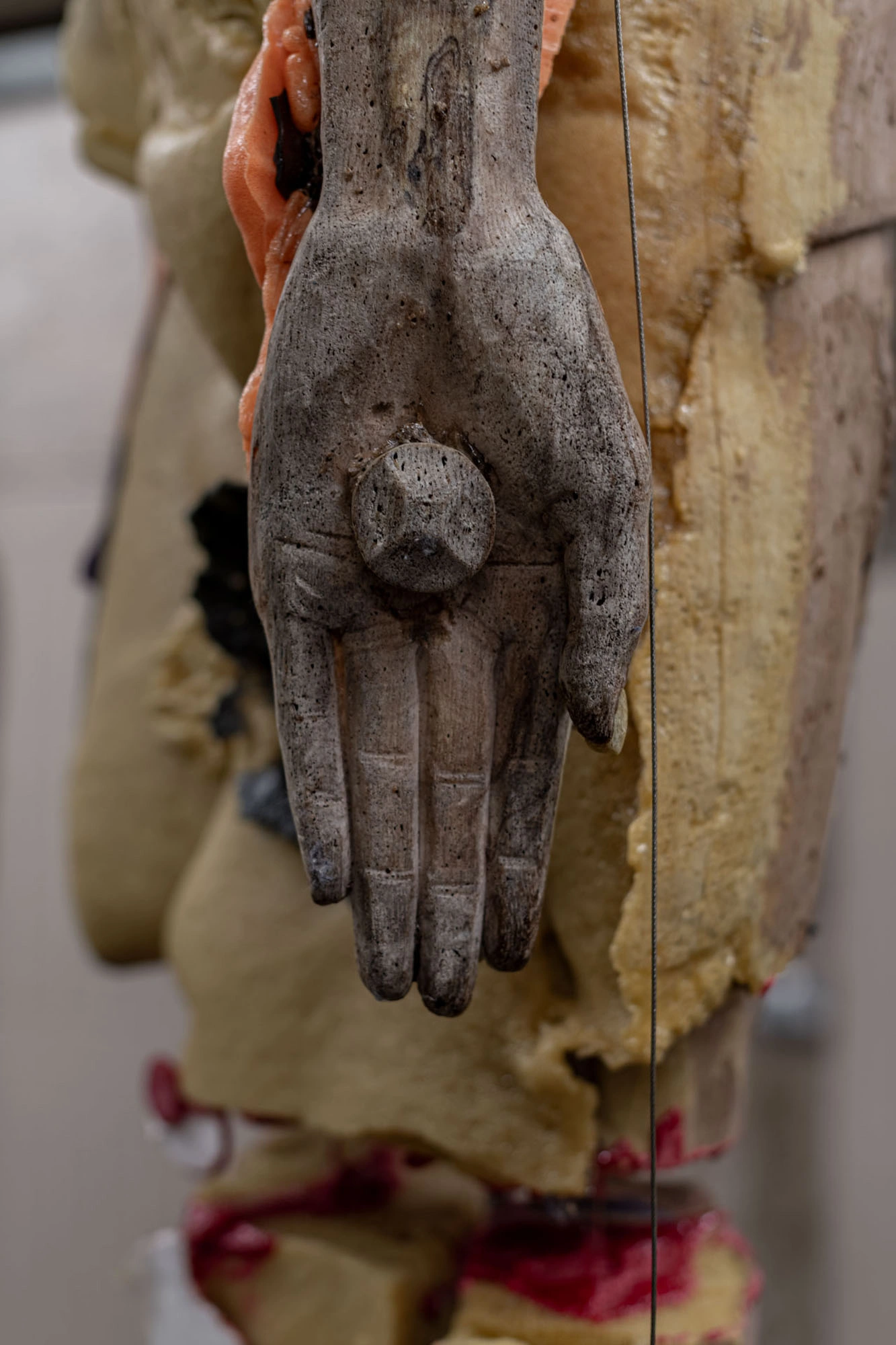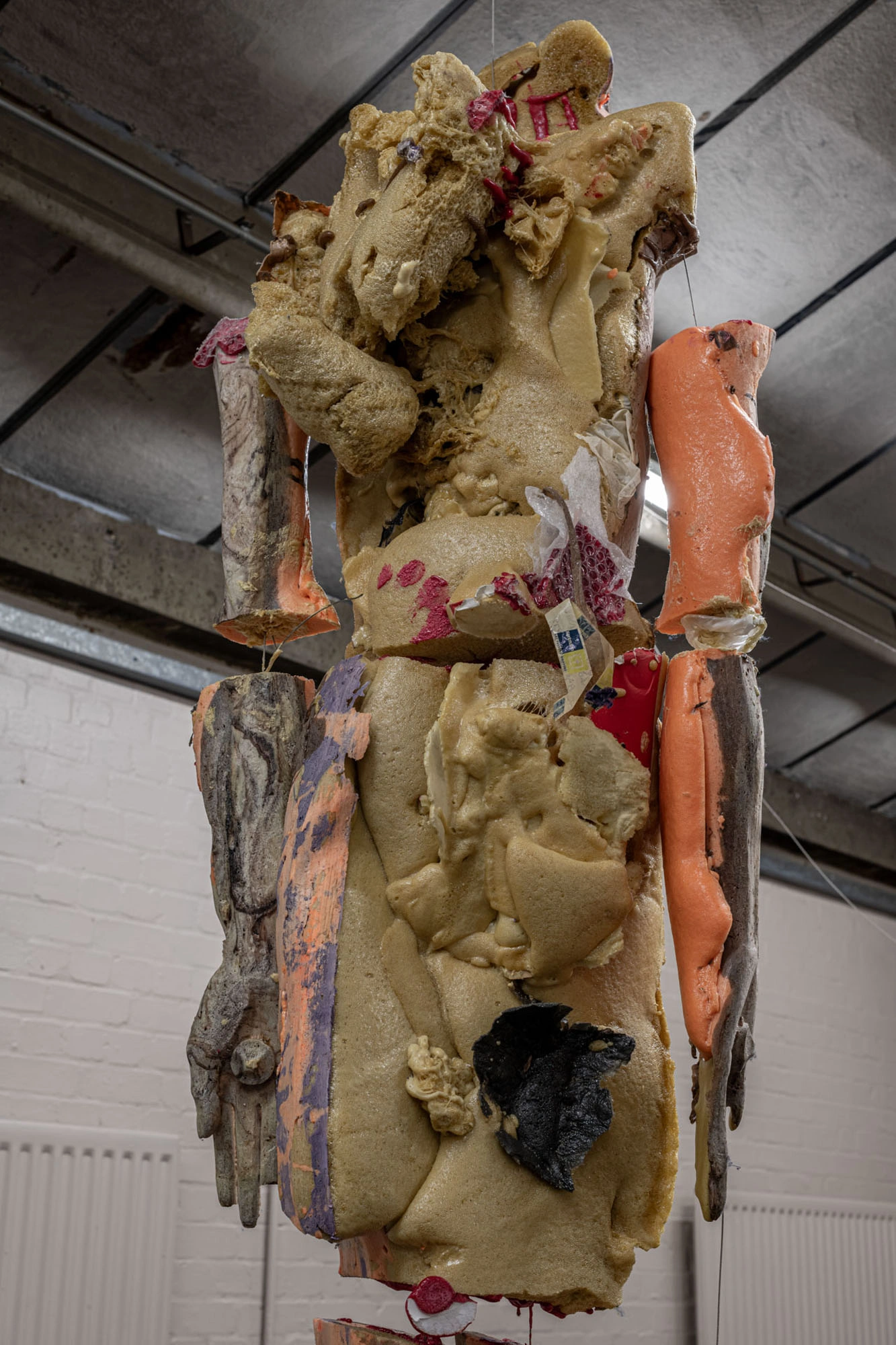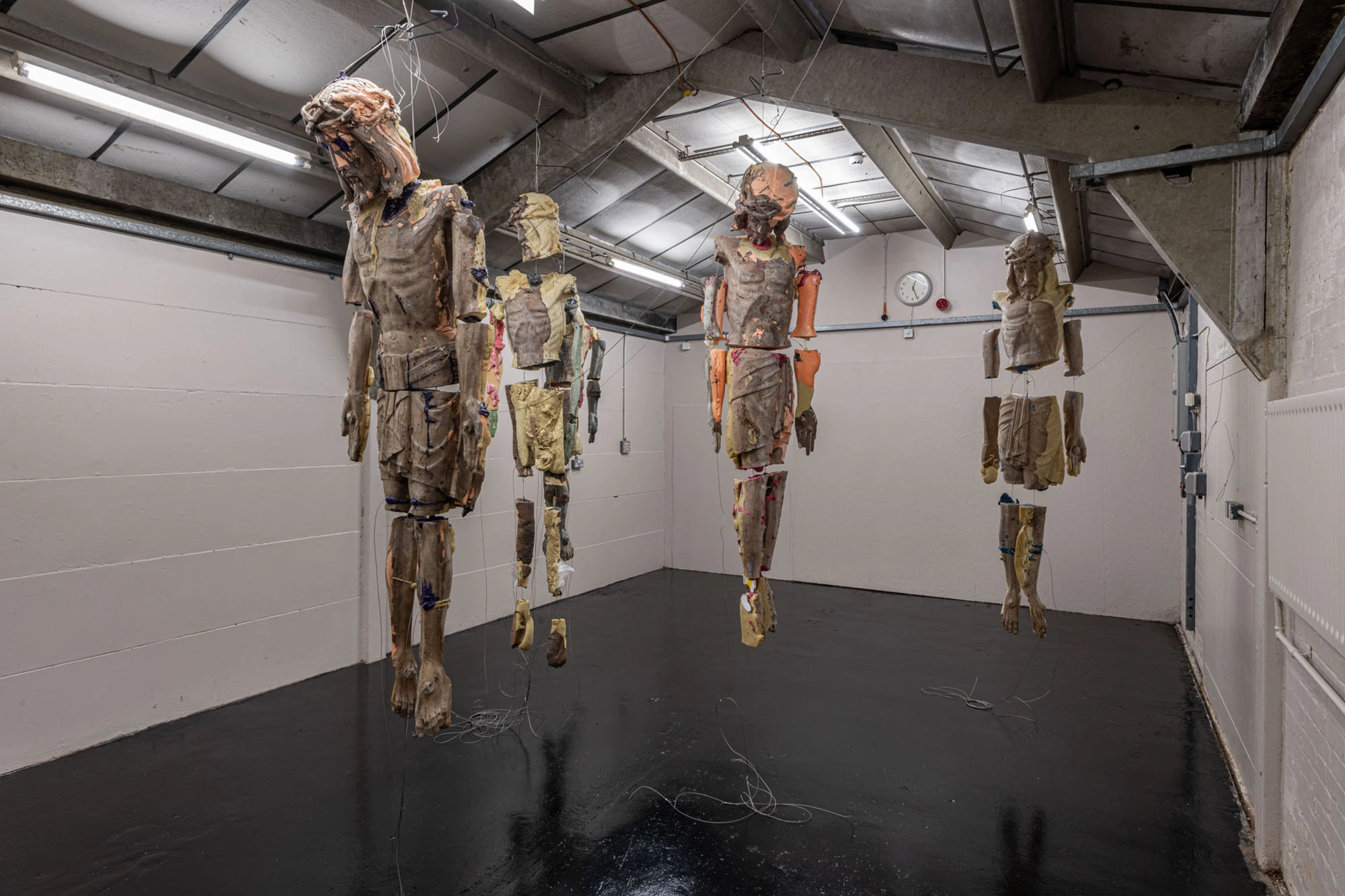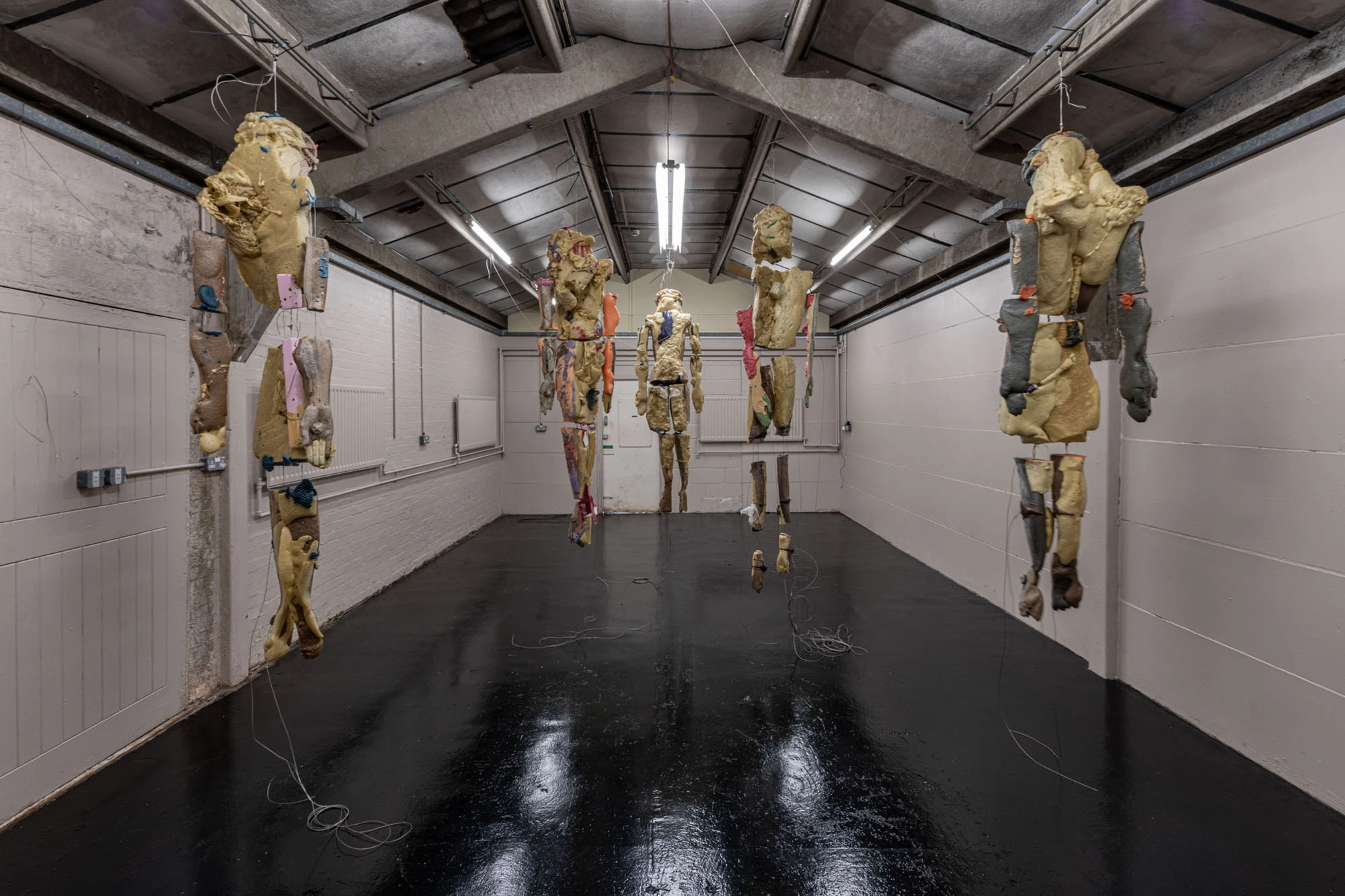In GOD’S ARMY at St. Chads, Folkert de Jong stages a sculptural reckoning — a suspended army of fractured bodies, haunted and hollow, poised between reverence and ruin. Known for his use of industrial detritus—Styrofoam, polyurethane foam, and wire—de Jong translates material decay into a theology of collapse.
His figures, recalling ecclesiastical icons and puppet carcasses, hang like relics of faith’s exhaustion. “The work challenges the visitor to reflect on themes of power, faith, and human action”. But what it truly exposes is the tension between belief and its dismemberment.
De Jong’s army—part Christ figures, part mannequins of moral failure—feels like an autopsy of Western iconography. Each torso is flayed open, each gesture suspended mid-fall. The polyurethane flesh, bruised with pigments, is caught between sacred pathos and grotesque theatre. The result is neither devotional nor sacrilegious—it’s an anatomy of doubt, the body politic of faith disassembled and wired to the ceiling.
In this space, de Jong’s practice becomes less about provocation and more about witnessing. The figures appear animated yet lifeless, dangling as if awaiting resurrection or disposal. Their material fragility—the soft foam mimicking rotting wood or mummified skin—echoes a world where sanctity has become synthetic. The industrial setting of St. Chads, with its cold lighting and exposed beams, sharpens this sense of posthuman liturgy.
There’s something disturbingly contemporary about this army of saints. They evoke not only crucifixion but also algorithmic puppetry—the way ideology today manipulates collective emotion. De Jong’s sculptures do not moralize; they mourn. They mourn the exhaustion of meaning, the collapse of transcendence into spectacle.
If GOD’S ARMY feels like a ritual, it’s one performed after the death of belief. The sculptures float, fragmented and forlorn, suspended in the uncertain air between salvation and scrap.


